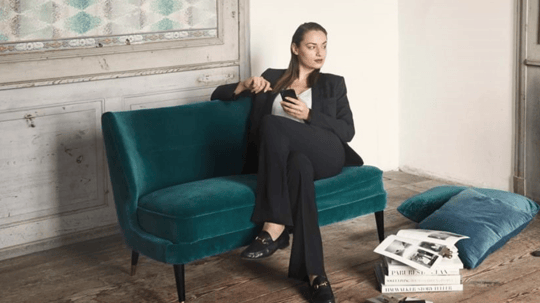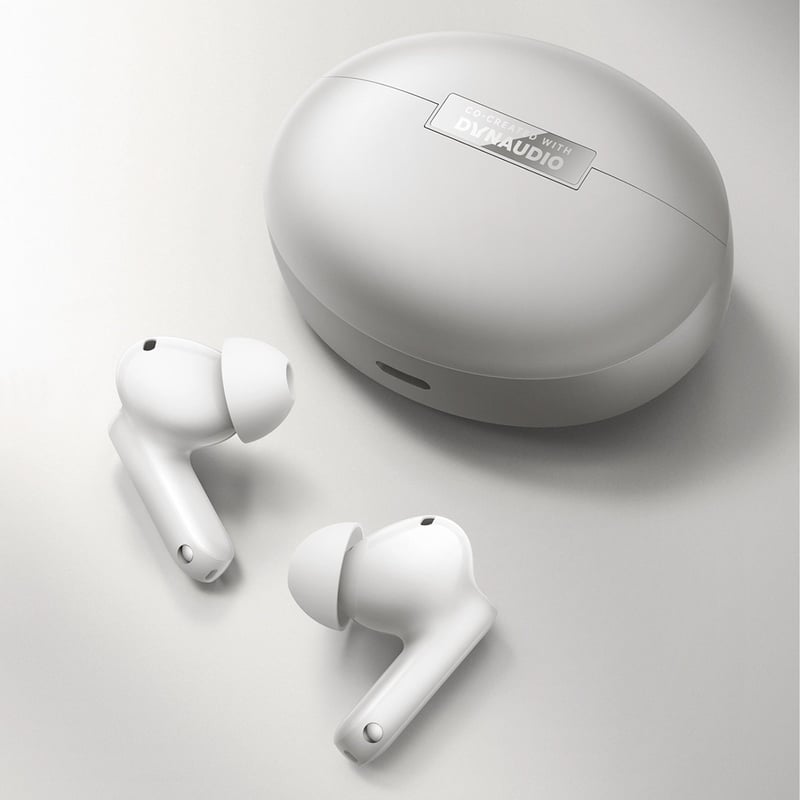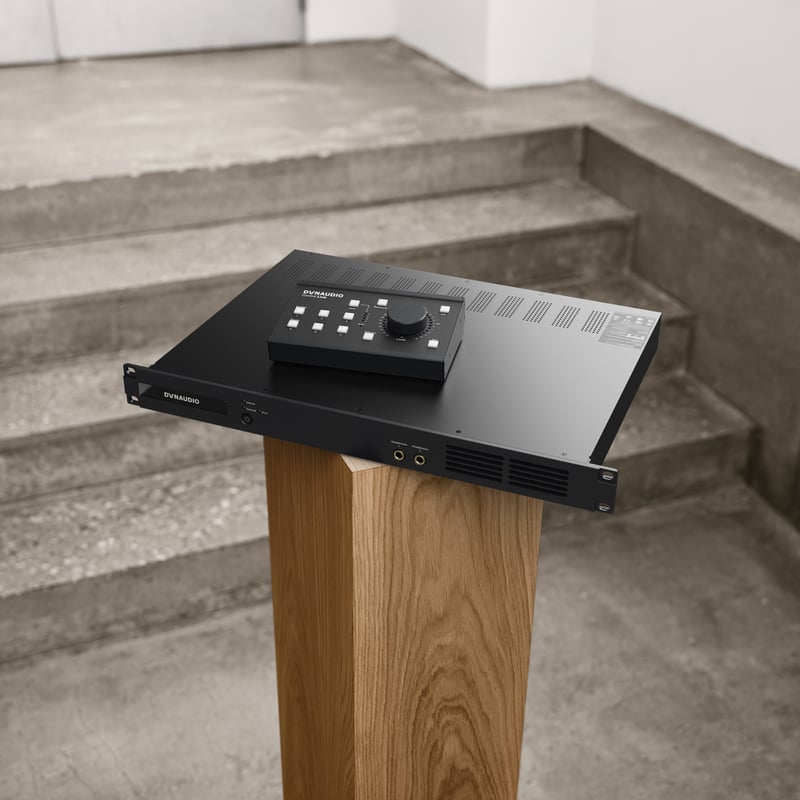This episode's question
Watch the entire video above or skip directly to the question you find interesting by clicking the links below:
Our first question is from Jakob. He’s interested to know what he can use for room treatment that doesn’t look like it’s from a sound studio?
Roeland Slump asks if there's any way to find out if a subwoofer is good or not?
"How do you tune a loudspeaker?" That's our next question.
Finally, Rodo Ortiz asks: "What reasons are there for making an open cabinet with bass reflex instead of a closed cabinet?"
Subscribe now: Ask The Expert on YouTube
Thank you!
We want to thank all of you who posted questions on our Facebook posts. We didn't have a chance to answer all of your questions, but we'll keep them in reserve - just in case.
Subscribe now: Ask The Expert on YouTube
If you have any more questions, please share them with us - and the rest of our community - on our Facebook page, in the comment section on YouTube or send us an E-Mail with your question.
All the best,
Kristoffer and Christopher
Like our coverage from the High End show? There's more...
In this Facebook Live session, Otto Jørgensen and Roland Hoffmann discuss some of the fundamentals of tweeters and compare the new Esotar Forty with our legendary Esotar 2.
We also wanted to take advantage of having some of our engineers at High End. So, we invited Georg Le Kynde, Mechanical Engineer, to join us for a chat about simulation tools.
Finally, we used the opportunity to go through our archives and answer some of the best questions we hadn't had time to answer earlier with help from our Product Manager, Otto Jørgensen.
Transcript
Christopher:
Hello and welcome to Ask the Expert. My name is Christopher and I am fortunate enough to have Kristoffer with me. Kristoffer, do you mind telling us a little bit about yourself?
Kristoffer:
Of course. I work as an acoustic engineer at Dynaudio and my job is to tune the speakers from concept to final products.
Christopher:
It is a long journey, right?
Kristoffer:
It is a long journey with a lot of people.
Christopher:
I know we are in High End right now, so it is a little bit loud. But should we do a question?
Kristoffer:
Yeah, let’s do that!
Christopher:
Kristoffer, what would you use for room treatment that doesn’t look like it is from a sound studio?
Kristoffer:
That’s a difficult one to answer actually, because there is a reason why the material looks like it does. Especially, because I know the user asked– especially for the low frequency part of the room treatment. And this is a tricky one to deal with. You want something – that when we deal with this low frequency room modes in the room- We need to treat in what’s called in the pressure domain. In order to do this, we need something that is big and it acts like an absorber.
Christopher:
And something big wasn’t exactly what they were looking for. It is not nice to have in your living room.
Kristoffer:
No. No no no… The good thing about it is that you can put it against the wall and you could put it in the corner. So, you do not have to put it in the middle of the room.
Christopher:
So, there are things that you can try hide away but it is still look big…
Kristoffer:
Yeah, it’s kinda… It will always look big because you deal with the loud wavelengths, low frequencies and loud wavelength. And you need something that can act slowly and in order to act slowly it needs to be big and slow. But what you could do so it doesn’t look like a studio is actually to build a new wall.
Christopher:
A new wall?
Kristoffer:
A new wall. So, if you like – if you have your… This is your backwall and this is the problem area. You can put like a plastic board in front of it. Length is like 10 cm, 30 cm in front of it and suspend it so its kind of – it is not hard-stuck to the wall. So, it kind of acts like a big membrane.
Christopher:
So, there is some room in between…
Kristoffer:
There is some room, exactly. You can put some damping material where you have the air. And then this plastic board actually absorbs the low frequency in it as it kind of reflects on the backwall.
Christopher:
And you said it was 10 cm out or something like that.
Kristoffer:
It depends on how low in frequency you would like to act and also the size of the plastic board. But if you make it: the bigger, the better.
Christopher:
The bigger, the better…
Kristoffer:
The bigger, the better. But at least it doesn’t look like you have put something up because you can kind of – you can paint it like the wall. It looks like it is a part of…
Christopher:
So it is just – it creates a space that holds to absorb all of the low frequencies.
Kristoffer:
Exactly… That’s one way to do it. So, if you wanna use a plant as suggested by the question. Then he needs something that is big, something that acts like a panel absorber, something that can actually move. Maybe some weird cactus can do it, I don’t know.
Christopher:
But that’s a guess right?
Kristoffer:
That’s a guess. And probably not something you would have in your corner anyway.
Christopher:
Perfect! Kristoffer the next question is about the subwoofers. More specifically, how do you decide if the subwoofer is good?
Kristoffer:
Yeah, actually it is quite easy if you know what you are looking for. So, you actually adjust it the same way you adjust a normal loud speaker. So – but it is easier to adjust a normal loud speaker because you have the low frequency you have some mid-ranges and you have the high frequency so you have like the full picture to decide upon if it is good or not. If you listen to the subwoofer alone and you only have like the sub part and that’s – It can be tricky for the normal user to know if this is a good sub, does it actually perform as I expect. So, what I would do is to have a sub and have a small two-way system so we have like the full system. And then you listen for the space in the music and you listen for the stereo image and the depth and so on… And then you turn the subwoofer on and you turn it off…
Christopher:
So, you switch around…
Kristoffer:
You switch around… If the subwoofer adds extra space around the instruments or it makes the recorded space sound more natural, in your opinion, then the subwoofer is probably working quite good.
Christopher:
It does what it does…
Kristoffer:
It does what it does but in the correct way. If the space around the instruments of recording becomes boomy and all you hear is the subwoofer then either the subwoofer is way too high or it is not working as it should.
Christopher:
Is there any reason that you would use two loud speakers?
Kristoffer:
No, it is just to have something that is small actually it does not play too much space.
Christopher:
So, you can also do it with a three-way?
Kristoffer:
You can also do it with a bigger speaker.
Christopher:
Perfect!
How do you tune a speaker?
Kristoffer:
That’s a good question and a long one. First of all, it takes a long time to probably tune a speaker. At Dynaudio we have a big measurement room and that’s where everything begins.
Christopher:
And the new Dynaudio Lab, right?
Kristoffer:
Exactly… So when we have a box, a cabinet and we have some… it can be a prototype box, a square box, whatever and we have chosen some drivers that fit the box and we take the box and the drivers. Mantle drivers in the box. And take it in the lab and we measure the response of each driver individually. Without any filters, without anything. That’s because then we have the complete – called the system response. Measured around the entire speaker of each driver. Then we can start to tune the loud speaker afterwards. And this is the basic starting point even though – if it is a passive or an active speaker…
Christopher:
So, we do this every single time?
Kristoffer:
Every single time.. and every time we change something in the cabinet as we progress the cabinet or the drivers then we re-do the measurements because everything has an effect on the acoustics.
Christopher:
Exactly! And I guess so… When you have these measurements you can see… I am guessing now – There is depth or… something goes way too high, then you put in something new, you take out and you change and…
Kristoffer:
Not yet… But we start to analyse all the results in the frequency and the time domain and then we start to simulate the filters. If we take an active system because that’s the easiest one – kind of… Then we take all the measurements, we put them in medlab. While we build some simulation tools that can help us to analyse how does the different filters affect the system response and then we can simulate and we can try it afterwards and we can listen every time we do, every time we simulate something and build a filter and we put it in the speaker and we give it a listen. Does it listen as we expect from the simulations…?
Christopher:
So you simulate, you get a filter, you put it into…
Kristoffer:
We put it in than we listen. And then we also re-do some of the measurements just to confirm that our simulation are correct. And then we can take – we can say OK, this is how far we got this filter now it sounds like this. Let’s try something… There is always something you can tweak and play with. Then we go back to the simulation, re-do the tweaking, fit it in the cabinet, listen, measure and so on and so on…
Christopher:
It sounds like it is a process that goes on and on for a long time…
Kristoffer:
It is a long process and it is an iterative process. You always revert and every time you do a change mechanically to the cabinet or the drivers, it is from the phrase again. And exactly it is the same we do passive speakers. But here we can… we do not simulate that much. So, we measurements, we look at the responses and then we sit down with a piece of paper and start actually calculating how to put the – where to put the filters. And then we build the filters physically because it is a passive system so you have to build it. And then we build the filter. We do some of the measurements again and we start to listen. That’s always a lot of listening involved. And this is kind of the same approach.
Christopher:
So when do you know when you are done? Are you ever done?
Kristoffer:
There is actually no way. Probably not ever done… There is always something you would like to change just slightly but at some point you say “OK this is the final cabinet, if it performs well – these are the final drivers, they perform well – this is the final filter, it really performs well” and at some point you have to like – draw a line.
Christopher:
Draw the line and say that this is a good speaker now.
Kristoffer:
… that this is actually a good speaker. It performs as expected in this criteria we have for tonal character, balance, imaging, depth and so on…
Christopher:
And do you… I remember that there was another question that was related to it. Do you try to do this in different rooms?
Kristoffer:
Yes! Definitely. We have our reference room we use for all of the tuning. And this is a room that we know very very well because we have spent so many hours in there listening to different speakers and competitors and so on… So we know the room and we know how a good speaker should perform in that particular room so when we are kind of satisfied in that particular room then we start taking it to other rooms to see if it…
Christopher:
And again, do you do measurements in those rooms as well?
Kristoffer:
Sometimes… Not to develop the speaker as such but more to find tune and see if something is – if we can measure what we hear, for instance. We have with.. we sit there discuss. There is something around… Whatever 3 kHz. Then we can measure and check if something actually there. Let’s go find out what it is in the lab afterwards. And then at some point we also take the speakers home, bring them home in our familiar rooms to see how they perform there.
Christopher:
I am getting the sense that there is a lot of listening and lot of reiteration in this process.
Kristoffer:
Definitely… And we always work as a team, the acoustics team, department…
Christopher:
How long is a process like this?
Kristoffer:
From concept to finished product it is an easy a year that goes by…
Christopher:
It must be nice when it is finally done and you have a loud speakers that you can be proud of…
Kristoffer:
But then the critical listening where you actually build the filters and do all the iterations is around a month. Then you have something that is almost there…
Christopher:
Almost there…
Are you ready for the final question Kristoffer?
Kristoffer:
Yeah.
Christopher:
It is from Rodoortiz and he wants to know what is the reason for making a closed cabinet instead of an open cabinet with bass reflects?
Kristoffer:
Yes. There are more reasons than one actually. One of the reasons is that it is simple to do. That’s less that you have to calculate and tone and tune.
Christopher:
In the closed cabinet?
Kristoffer:
In the closed cabinet yeah. The closed cabinet has a different low frequency roll-off than the open cabinet with the bass reflects. When you have an open cabinet then you can tune the roll-off. There using the bass or the port. You don’t have this freedom in the closed cabinet. But instead you have a very natural, it is called a 12 to DB octave roll-off and it actually plays a little deeper than the ported one but it sounds less deep because the slope of the roll-off is different. It is more shallow than the ported one.
Christopher:
Let me get it straight. If you have a closed box in a place deeper but it doesn’t sound like it…
Kristoffer:
Yeah that’s because when you have the port in, imagine you have… This is the roll-off of the closed cabinet. So it rolls off 12 to DB octave then if you have the bass reflects you get like something that is – it is deeper but it doesn’t go as low. Instead it has like a hump or you can tune it with a hump around 80/100 Hertz. It gives the impression of being boomy – is not the right word but you can get the impression that they placed more bass at least deeper than it actually does. When you have the closed box cabinet, one of the reason that you would like to do this is that you can – you use the air that is trapped inside the box as a spring effect. So when the woofer moves in…
Christopher:
It gets more force from the pressure inside the cabinet…
Kristoffer:
Exactly, it gets some force to forth too– to move it up back again. Which in the end can give you like a cleaner, more tight bass response than in the ported system.
Christopher:
So, there are benefits to both ways.
Kristoffer:
There are benefits to both ways, exactly…
Christopher:
Kristoffer, thank you so much for being with us today.
Kristoffer:
You are so welcome…
Christopher:
It was a pleasure. And I thank all of you for your questions…
Sign up to get more great articles
Nothing compares to the satisfaction of knowing – for a fact – that something is as good as it gets





